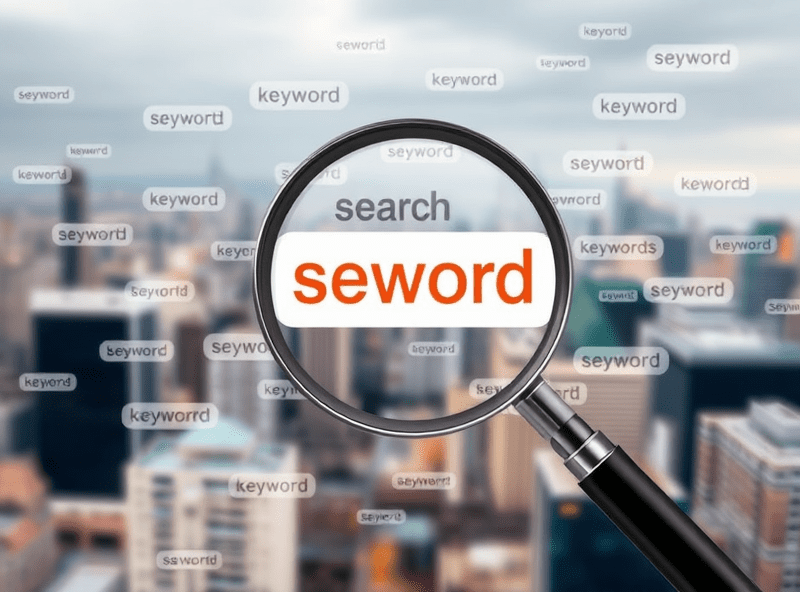Fixing Local SEO Bugs for Multi-Location Sites That Break Easily
Google Business Profiles Don’t Like Uniformity
If you’ve bulk-created 40+ Google Business Profiles (GBPs) and thought copy-pasting descriptions would save time — surprise, it’s a great way to tank your visibility. I inherited a client setup where all locations had identical descriptions, hours, and ‘responses to reviews’ due to some “clever” automation someone built with Zapier. We’ve spent weeks undoing that mess after several listings got slapped with visibility drops.
What I see a lot of people mess up is forgetting GBP is partially driven by engagement behaviors. When every location looks cloned, Google assumes there’s nothing to surface. Or worse, it thinks your listings are spammy satellites. We had Denver and Salt Lake completely disappear for branded queries, only reappearing after we gave them unique copy and tweaked categories per location.
More worryingly, there’s an undocumented behavior where locations with overly similar titles + descriptions get periodically removed from Maps for ‘quality issues’. No official docs. Just a quietly removed listing and a note in the NMX dashboard saying it’s under review for compliance. Gotta love that.
Chain Store Pages Break on Location-Based Queries
This was wild: we were working on a multi-location carpet cleaning chain across the Midwest. Site was ranking decently for city + brand type of queries (like “Acme Carpet Cleaning Springfield”) but despite having a separate page per location, generic terms like “carpet cleaners near me” routed 80% of the clicks to their central corporate HQ — which wasn’t even picking up phones for local calls.
Turned out the site used Cloudflare’s APO and lazy-loaded footer schema with a weird JS mapping behavior. Googlebot couldn’t reliably index the build-time structured data that was supposed to declare the geo-region of each location page. No console errors. No warnings. It just didn’t exist in the rendered HTML. Discovered it only after I used the Mobile-Friendly Test and compared the rendered DOM. Took two weeks to track that down.
The fix was painfully simple: rendered JSON-LD inline and pre-prioritized location-based sitemaps.
NAP Consistency Isn’t Just About Typos Anymore
Name, address, phone. The holy trinity of local SEO. Everyone parrots that — but the gotcha these days is formatting nuance. I had a client using ‘St.’ versus ‘Street’ across different directories. We thought that was just cosmetic. Nope. Analytics was showing weird discrepancies in call tracking triggers per suburb, even though it all pointed to the same number.
Deep dive exposed this: some third-party directories had appended a toll-free number scraped from the corporate site using outdated OpenGraph data. Others were showing map pins from a 2018 schema file still indexed on Bing. I’m not joking. The phone number people actually clicked varied by source, and our CRM saw gravely inconsistent attribution rules.
- Audit your OG tags across all location pages
- Use LocalBusiness subtype schemas for specific categories
- Update citation aggregators more often than once a year
- Double-check your USPS-standardized address format — Google favors consistency over realism
- If you’re using call tracking, make sure the permanent number is stored in the schema, not the JS-mask
- Avoid suite numbers when you can — they trigger duplicate listing flags at scale
That formatting mismatch between the actual listing and the embedded data template tanks confidence scores across data providers, and you don’t realize until calls stop routing properly. Absolute pain.
Multiple Locations on One Domain? Canonicalization Will Betray You
Canonical tags do damage if you’re not careful with templated location pages. Pretty common setup: one primary domain, /locations/, then /locations/chicago, /locations/austin, etc. But someone on their dev team had added <link rel="canonical" href="https://example.com/locations/"> across all child pages. Beautiful. Every location was telling Google, “Ignore me, the real deal is the main locations hub page.”
I only caught it because CityPages were showing up under the wrong URLs in Search Console. Zero clicks, but thousands of impressions. Which is exactly how you lose local intent matches. Never trust assumptions about how your CMS handles canonical logic — Wix and Duda both have default canonical rules for location directories that frequently override intent.
The workaround: hardcode canonical links per location via the page template layer. And always audit the rendered source, not the CMS’s preview environment, because the logic might fork at build time. Especially if you’re using a framework like Next.js with ISR or static export.
Map Packs Are Fickle When Reviews Are Clustered
Still not sure if this is a bug or an intentional model trend, but I’ve seen clear cases where two locations under the same brand cannibalize each other’s Map Pack real estate. We had a dental chain with one office in Pasadena getting 300 reviews and another in Echo Park with just 25. But users searching “family dentists near me” in downtown LA got stuck seeing only Pasadena.
It got sketchy when the Echo Park listing disappeared from the Map Pack entirely, despite being geographically closer to downtown. Turns out too many reviews being responded to by the same manager account can cause Google’s clustering system to think it’s a duplicate or satellite. There’s no warning. It just drops from prominence.
“We noticed review replies are long and identical across multiple locations. Are all of these actually different businesses?” — a surprisingly real email from a Google support agent.
That’s how we learned: same tone + cadence in review replies = suspected franchise link. Split the tone, varied the response templates, and location visibility normalized over a couple weeks.
Local Structured Data Validates Without Ranking
This one drove me slightly insane. Valid structured data across dozens of pages — address, phone, geocoordinates, opening hours, all green in Google’s Rich Results test. No manual actions, no rendering issues. But rankings? Dead flat.
I finally found the culprit nestled deep in a Lighthouse audit log: client’s site was wrapped in a geo-IP redirect via a CDN layer, and some spiders couldn’t reach the localized versions unless headers matched expected region fallback rules. Aka: French IPs were being served US location content via the fallback logic, and Google’s crawler (US-east) was inconsistently resolving some pages due to Vary: headers.
This didn’t show up in Search Console. It didn’t trigger a redirect warning. But once we implemented edge-based route exclusions for all known bot IP blocks, rankings for those city pages jumped within days. Pro tip: never trust that structured data = crawlable content. Sometimes you’re validating metadata that the crawler never actually sees.
Apple Maps Connect Throws DNS Errors With Reverse Proxies
Quick horror story. Client set up a new location for their dry cleaning franchise. Listing disappeared off Apple Maps a week after verification, and couldn’t get re-verified. Their dev used a reverse proxy setup via Vercel, which rerouted all requests through a vanity hostname.
Apple Maps Connect would ping the hosted domain, fail DNS validation, and flag the URL as unreachable. No email alert. You only see it if you’re logged into Connect and manually check the location card. The fix was digging into the CNAME setup and creating exception rules for the Apple crawler to hit the raw origin directly. Took three escalations to figure that out because Apple gives zero error detail publicly.
Worth knowing: Apple will silently throttle attempts to re-verify failed listings past a certain retry count. If you’ve hit the ceiling, you’re stuck for months unless you submit through their enterprise reconnection team. Not documented anywhere.
Local Ads + Organic Listings Sometimes Compete Instead of Reinforce
Running both Local Search Ads and trying to dominate the organic Map Pack? Good luck. Had a campaign where leads dropped 30-something percent after we launched LSAs — and the kicker? Organic visibility dropped simultaneously. Assumed it was attribution confusion.
Actually: Google rotated the LSA results into the exact position our organic Map Pack results had previously lived. The listings looked visually identical to casual users. Users saw the LSA slot taking that spot and assumed they’d clicked the organic result. But we couldn’t attribute conversions to organic anymore because the click passed through ad routing first.
Only after exporting Google Ads location extension logs did we see clicks aligning to addresses that had technically gotten no organic clicks. We shut LSAs off temporarily. Map Pack reclaimed visibility in 6 days. Not sure if it was causation or correlation, but we’ve now added UTM tracking to all GBP primary URLs to at least isolate the pathways for debugging.








